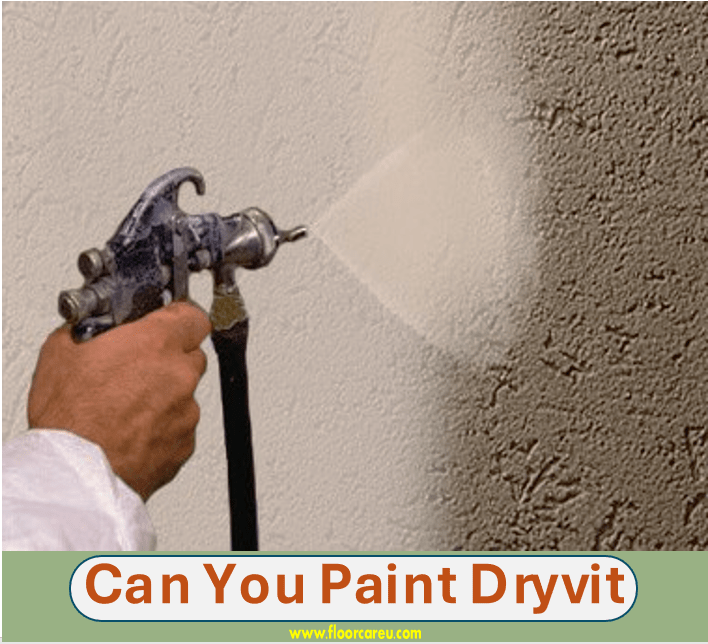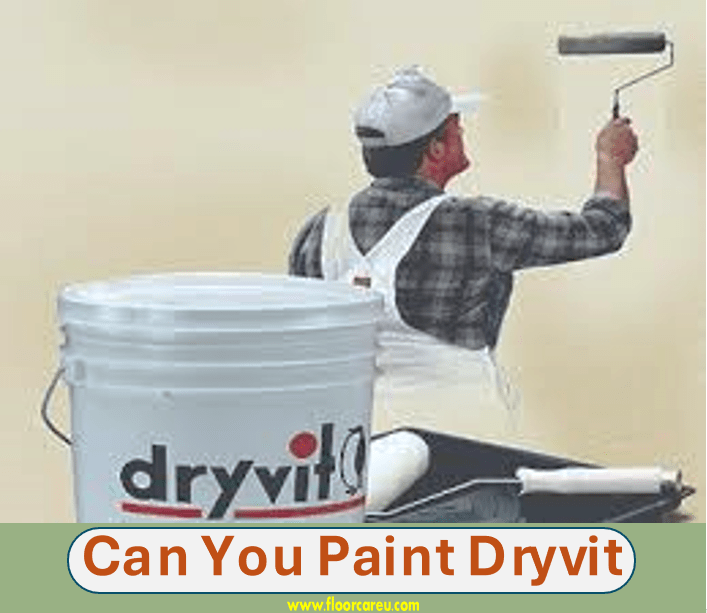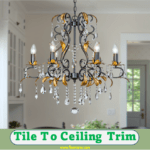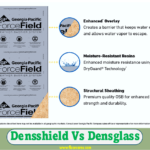Can You Paint Dryvit: Yes, you can paint Dryvit stucco. Painting Dryvit stucco is feasible and often recommended for maintaining and refreshing the appearance of the exterior surface.
Dryvit stucco, a synthetic stucco system, can be painted with suitable elastomeric breathable paint to ensure a lasting finish that allows for the necessary expansion and contraction of the substrate. Painting Dryvit stucco not only allows for aesthetic enhancements but also serves as a protective layer against environmental elements, ensuring the longevity of the surface.
To achieve the best results for your Dryvit stucco, following the recommended painting process and using the appropriate paint products is important. Additionally, seeking professional advice and guidance can ensure a successful painting endeavor.

Understanding Dryvit Stucco
You can now paint Dryvit stucco using elastomeric breathable paint for a fresh look. With advanced techniques, painting Dryvit is a viable option, enhancing its appeal and longevity. Maintenance now includes easy color changes to suit your preferences.
What Is Dryvit Stucco?
Dryvit, or Synthetic Stucco, is a popular exterior wall finish system recognized for its durability and energy efficiency. It is a multi-layered cladding system with a base coat, mesh reinforcement, and a textured finish coat. Unlike traditional stucco, Dryvit Stucco offers a lightweight alternative with enhanced insulation and moisture resistance, making it a preferred choice for modern construction projects.
Can You Paint Dryvit?
Yes, you can paint Dryvit stucco. Conventional wisdom used to dictate against it, but with advancements in paint technology, it is now entirely feasible to paint Dryvit stucco to change or refresh its color. However, it is crucial to use the right type of paint and follow proper preparation and application methods to ensure a long-lasting and aesthetically pleasing finish.
Benefits Of Painting Dryvit
- Enhanced Aesthetics: Painting Dryvit stucco allows for a wide range of color options, enabling homeowners and builders to achieve the desired aesthetic appeal for their properties.
- Improved Protection: Applying paint to Dryvit enhances its resistance to weather elements, prolonging its lifespan and reducing maintenance requirements.
- Maintenance and Repair: Painting Dryvit stucco can help conceal minor imperfections and minor damages, providing an effective solution for upkeep and repair.
- Customization: The ability to paint Dryvit stucco offers versatility in design choices, enabling individuals to customize their exteriors according to their preferences and evolving trends.
Choosing The Right Paint
You can paint Dryvit stucco, but choosing the right type of paint is important. Opt for an elastomeric breathable paint, which will provide the necessary flexibility and allow the stucco to breathe. This will ensure a long-lasting and professional-looking finish.
Suitable Paint Types
When painting Dryvit, selecting the appropriate type of paint that adheres well to the surface is crucial.
Considerations For Application
Before painting Dryvit, there are essential factors to consider for a successful application process.
Before painting, ensure the Dryvit surface is clean and free from dust, dirt, or debris.
Opt for elastomeric breathable paint that can accommodate the expansion and contraction of the Dryvit surface.
- Choose acrylic-based paints for superior adhesion and durability.
- Consider masonry paints for optimal coverage and protection against weather elements.
Priming the Dryvit surface enhances paint adhesion and creates a smooth, long-lasting finish.
Avoid applying oil-based paints as they may not effectively bond to the synthetic stucco surface of Dryvit.
Preparation And Application
Proper preparation and application techniques are crucial when painting Dryvit to ensure a successful and long-lasting finish. This section will discuss the necessary steps to prepare the surface, apply the primer, and apply the different paint application techniques.
Surface Preparation
Before painting Dryvit, it is essential to prepare the surface properly. Here are key steps to follow:
- Start by cleaning the Dryvit surface thoroughly. Use a mild detergent and water solution to remove dirt, dust, and debris. Rinse the surface with clean water and allow it to dry completely.
- Inspect the Dryvit for any cracks or damages. Fill in any cracks or gaps with an appropriate filler or caulk, ensuring a smooth and even surface. Allow the filler to dry, and sand it down if necessary.
- Next, check for loose or flaking paint. Scrape off any loose paint and lightly sand the area to create a smooth surface for paint adhesion.
- Finally, protect surrounding areas by covering them with drop cloths or painter’s tape to prevent accidental paint splatters.
Applying The Primer
Applying a primer is essential before painting Dryvit to improve paint adhesion and enhance the longevity of the finish. Here is how to apply the primer:
- Choose a high-quality, acrylic-based primer specifically formulated for use on Dryvit surfaces.
- Using a paintbrush or roller, apply a thin and even coat of primer to the prepared Dryvit surface. Ensure complete coverage.
- Allow the primer to dry according to the manufacturer’s instructions before applying the paint.
Paint Application Techniques
Now that the surface has been prepared and primed, it’s time to apply the paint. Here are some techniques to consider:
- Start by stirring the paint thoroughly to ensure consistent color and texture throughout.
- Choose a high-quality, elastomeric, breathable paint suitable for Dryvit surfaces.
- Using a paintbrush or roller, apply the paint in thin, even coats, working from the top to bottom of the Dryvit surface.
- If desired, you can apply multiple coats of paint, allowing sufficient drying time between each coat.
- Pay attention to the weather conditions. Avoid painting in extreme temperatures or high humidity, which could affect the paint’s drying and curing process.
By following these preparation and application techniques, you can achieve a professional and long-lasting finish when painting Dryvit.
Addressing Common Problems
You can paint Dryvit stucco, but it is important to use elastomeric breathable paint to ensure proper adhesion and prevent moisture issues. Consult with a professional to choose the best paint for your Dryvit surface.
Dryvit, a type of synthetic stucco, is a popular choice for exterior walls due to its durability and aesthetic appeal. However, like any other building material, it can encounter certain problems over time. In this section, we will address two common issues homeowners often face with painted Dryvit: moisture intrusion and repainting.
Moisture Intrusion
One of the most common problems with Dryvit stucco is moisture intrusion. This occurs when water seeps into the structure, leading to deterioration and potential damage. Moisture can enter through breaches in the sealant elements, such as windows, doors, chimneys, and any other through-wall penetrations.
To prevent moisture intrusion, it is essential to inspect and maintain the sealant elements regularly. Ensure all windows and doors are properly sealed and any cracks or gaps are promptly repaired. Additionally, consider installing a moisture barrier behind the Dryvit system to provide extra protection against water infiltration.
Repainting Dryvit
While Dryvit stucco can maintain its appearance for a long time, there may come a time when you want to change the color of your exterior walls. The good news is that you can repaint Dryvit! However, choosing the right type of paint is essential to ensure long-lasting and satisfactory results.
When repainting Dryvit, it is recommended to use an elastomeric breathable paint. This type of paint is stretchy, allowing it to move and expand with the stucco, minimizing the risk of cracking and peeling. Additionally, elastomeric breathable paint allows moisture to escape, preventing any trapped water from causing damage to the underlying structure.
Before applying the new paint, it is crucial to prepare the surface properly. Clean the Dryvit thoroughly to remove dirt, debris, and loose paint. Repair any visible cracks or damages with a suitable filler and let it dry completely. Finally, apply a primer designed for use on Dryvit to ensure proper adhesion of the new paint.
By following these steps and using the right materials, you can successfully repaint your Dryvit stucco and give your home a fresh look. However, if you are unsure about undertaking this task, consulting with a professional painting contractor with experience with Dryvit systems is always a good idea.
Expert Tips And Recommendations
When painting Dryvit, it’s essential to follow expert tips and recommendations to ensure a successful and long-lasting result. Professional contractors and maintenance practices have invaluable insights into the best techniques and products for painting Dryvit.
Tips From Professional Contractors
Professional contractors emphasize the importance of proper surface preparation before painting Dryvit. This includes cleaning the surface thoroughly to remove any dirt, debris, or mold. It’s also crucial to repair any cracks or damages using suitable repair materials to ensure a smooth painting surface. Additionally, they recommend using a high-quality primer specifically designed for synthetic stucco to promote adhesion and enhance the durability of the paint.
Recommended Maintenance Practices
As part of the recommended maintenance practices for painted Dryvit, regular inspections are essential to identify any signs of wear, cracking, or fading. Routine cleaning using mild, soapy water and a soft brush can help preserve the paint’s appearance and prevent the buildup of dirt or pollutants. Furthermore, professional contractors advise homeowners to promptly address water infiltration issues to prevent damage to the underlying stucco structure.
Conclusion And Final Thoughts
Once you’ve decided to paint your Dryvit, following the steps is important to ensure a long-lasting, high-quality finish.
Ensuring Longevity Of Painted Dryvit
Properly preparing the Dryvit surface before painting is crucial for the longevity of the paint. This includes cleaning the surface thoroughly, repairing any cracks or damage, and applying a suitable primer. Using the right type of paint, such as elastomeric breathable paint, will also help maintain the integrity of the Dryvit over time.
Key Takeaways
- Ensure proper surface preparation before painting.
- Use elastomeric breathable paint for a long-lasting finish.
- Regular maintenance and inspections can help identify and address any issues early on, ensuring the longevity of the painted Dryvit.

Frequently Asked Questions For Can You Paint Dryvit
Can You Change The Color Of Dryvit?
Yes, Dryvit can be painted. To change the color, contact your local distributor or sales representative for options.
What Is The Most Common Problem With Dryvit Stucco?
The most common problem with Dryvit stucco is deterioration caused by moisture entering the structure. Moisture intrusion occurs through breaches in the sealant elements such as windows, doors, chimneys, and other through-wall penetrations. Proper sealing and maintenance are necessary to prevent this issue.
Is Dryvit The Same As Stucco?
Dryvit is synthetic stucco used as a final coat to prevent water penetration in EIFS systems.
What Is The Best Paint To Use On Eifs?
The best paint for EIFS is an elastomeric breathable paint, such as acrylic stucco finishes.
Can You Change The Color Of Dryvit?
Once manufactured, Tremco CPG Inc. will not accept any color change requests. Contact your local distributor or sales representative for more information.
What Is The Most Common Problem With Dryvit Stucco?
Moisture intrusion due to breaches in the sealant elements, such as windows and doors, can lead to deterioration of Dryvit stucco.
Conclusion
Considering the ability to refresh and customize colors, painting Dryvit stucco is now feasible. Enhancing and renewing Dryvit’s appearance is entirely achievable by following proper techniques and using the appropriate type of paint. Consult a professional for guidance on painting processes and color options.


